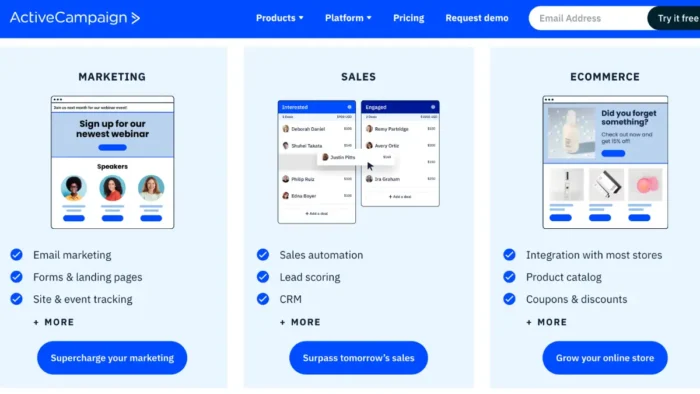Almost everyone has had the experience of seeing a website and wondering what its designers were thinking. Bad graphics, weird color schemes, garbled text, and busy designs can doom a site that offers good ecommerce deals and desirable products. This can be further complicated if you have not done some ecommerce consulting and using ecommerce content.
Marketing managers might not appreciate, however, that ecommerce content no-nos go well beyond site design. A vendor that is researching how to set up an ecommerce site needs to go well beyond the common design and text taboos.
Here’s a common list of mistakes made while building online businesses:
Selecting an Ecommerce Platform that Doesn’t Scale
Simple platforms are adequate for ecommerce businesses that do not intend to grow. A platform that does not scale up with a business, however, will place strains on the business at the worst possible time. When selecting an ecommerce platform, look for scalability to allow the business to expand.
Relying on Manufacturer Product Descriptions
Manufacturers typically describe their products in functional terms, with little or no appeal to the end user’s emotions. A good ecommerce description should sell the product. That description should be buyer-focused and not merely a laundry list of the product’s functions. It should entice the buyer with benefits and appeal to the buyer’s psyche and imagination.
Failing to Optimize a Product Page for a Search
Too many online vendors default to stuffing a lot of keywords onto a product page. This is ineffective and can backfire by lowering a page’s search engine rating. Ecommerce service providers publish information on factors such as keyword relevance, competition and ranking problems, and search volume to assist in keyword selection. You should also use relevant product names with descriptions that add value and quality to the product. Good page titles are critical for higher rankings on search engines. Unique product URLs and meta descriptions will also improve page rankings.
Ignoring Cart Abandonment Rates
By one estimate, cart abandonment accounts for more than $3.5 trillion in lost sales opportunities. A high cart abandonment rate could mean your checkout process is confusing, shipping fees are too high, or your payment system is not secure. Not every prospective customer that visits an ecommerce site will become a purchaser, but a high rate of abandonment is a sign of a real problem.
Mismanaging Customer Reviews
The customer may not always be right, but one or two bad customer experiences can circulate faster and farther in ecommerce than in the world of brick-and-mortar sales. A good ecommerce system will give you several pathways to handle a negative customer experience. It should give you sufficient information to track lost or missing orders. The system should also make product returns and refunds fast and simple while providing an opportunity to apologize to the customer. You should also monitor social media for negative press and respond where appropriate.
Forcing Customer Registrations
Customers seeking a fast and efficient experience will not want to register on a site. Give your customers an opportunity to check out as a guest. Yes, registering them does offer you greater benefits, so offer them something in return for doing so, such as lower shipping costs or purchase discounts.
Ignoring Post-Purchase Support
The customer’s interaction should not end when they click the “purchase” button. Post-purchase support is critical to providing an overall positive customer experience. Set up a provision to allow the customer to track shipments. Offer online tutorials to help your customer achieve maximum product benefits. You can also use post-purchase experiences to recommend additional purchases and returns to the site.
Eliminating these ecommerce content no-nos will provide your customers with a better shopping experience. Doing this will also give you more tools with which to monitor the performance of your site and improve your business.



